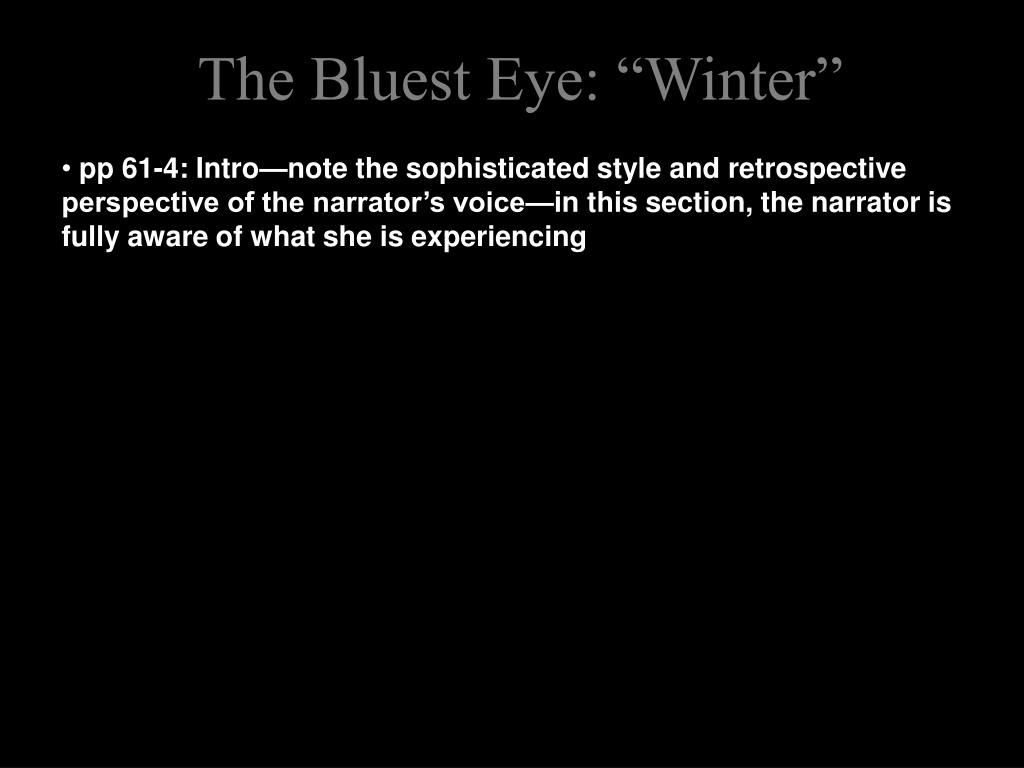

At this point, The Bluest Eye novel makes one of the most powerful attacks on the relationship between western standards of female beauty and the psychological oppression of black women in the United States of the 1940s and later decades. Sumana rightly notes that Morrison tends to see racism and sexism in her novels from the female perspective. Rather than mitigating their frustration in a white world, their desperate attempts to become white intensified it. Then, her mother, like many other “expatriate” women, lost her communal southern culture and painfully confronted northern standards of physical beauty and style. Pecola’s parents moved from Kentucky to Loraine, Ohio in the 1940s looking for economic profits. Revista de historia y pensamiento de género. HERTON, C.: The Sexual Mountain and Black Women Writers. Pecola is ugly because she is blacker than the others. Then, where does her ugliness reside? The community’s hierarchy of colour and caste gives preference to those members who appear more white over those who do not.

In the novel’s only concrete description of Pecola, the narrator gives us quite a positive one: “her teeth are good and her nose is not big and flat like some of those who were thought so cute” 2. Calvin Hernton describes the AfricanAmerican woman of the time as ashamed of what she is: “her blackness is the antithesis of a creamy white skin, her lips are thick, her hair is kinky, and short she is, in fact the antithesis of American beauty … in this country she is ugly”1. It describes the devastating effects of the beauty standards of the white dominant culture in the US of the 1940s on the self-image of Pecola Breedlove, an AfricanAmerican female adolescent despised by her parents for her “inherited” ugliness. Morrison’s first novel The Bluest Eye is based on the foundations of the later developed REI –Race, Ethnicity and Imperialism– feminism. Toni Morrison’s work consistently shows that identity and place are found in the community and in the communal experience, and not in the transcendence of society or in the search for a single, private self. The search for place and the self is an on-going phenomenon in American discourse. Gonzalez, Toni Morrison’s “The Bluest Eye”: the construction of African –American women’s identity politics in the 1940s Keywords: Race, gender, environment, beauty, identity politics.Ĭuadernos Kóre. The purpose of this paper is to demonstrate from a Race, Ethnicity, Imperialism feminist perspective how the novel contributes to forging identity politics among African-American women in the first half of the twentieth century and its significance in contemporary society. Palabras clave: Raza, género, espacio, belleza, políticas de identidad.Ībstract: Toni Morrison’s The Bluest Eye describes the destructive effects and the dramatic consequences of the white standards of beauty in the US of the 1940s. La finalidad de este artículo es demonstrar desde la perspectiva del feminismo de raza, etnicidad e imperialismo como esta novela contribuye a forjar políticas de identidad entre las mujeres afro-americanas en la primera mitad del siglo veinte y su repercusión en la sociedad contemporánea. Resumen: The Bluest Eye describe los efectos destructivos y las dramáticas consecuencias de los modelos de belleza blanca en los Estados Unidos de los años cuarenta.

Teresa González (Universidad Nacional de Educación a Distancia) TONI MORRISON’S THE BLUEST EYE: THE CONSTRUCTION OF AFRICAN-AMERICAN WOMEN’S IDENTITY POLITICS IN THE 1940s


 0 kommentar(er)
0 kommentar(er)
